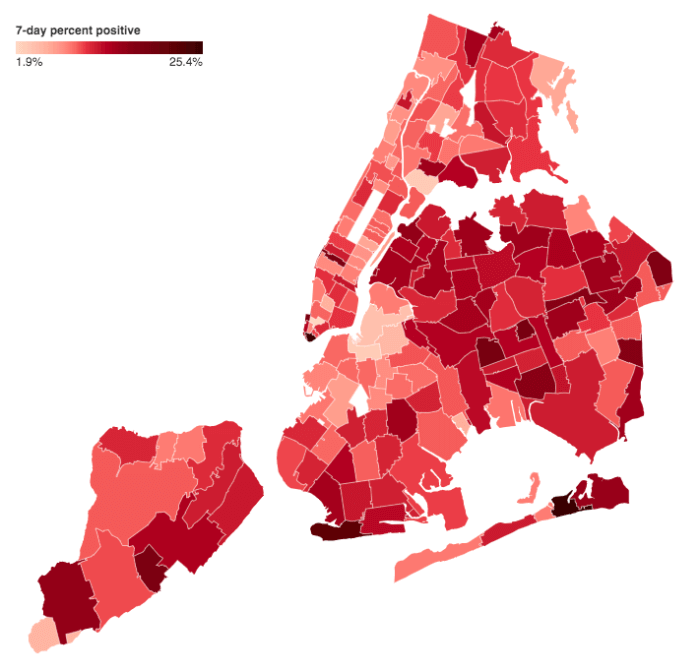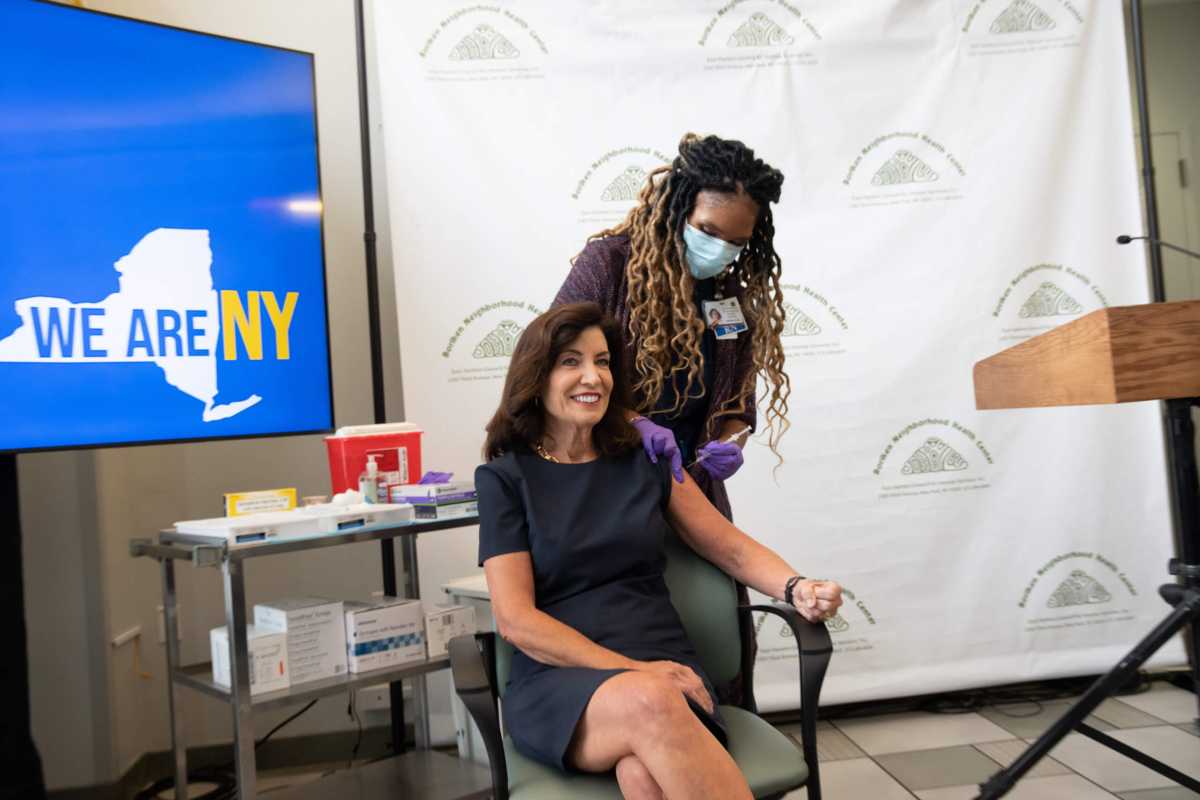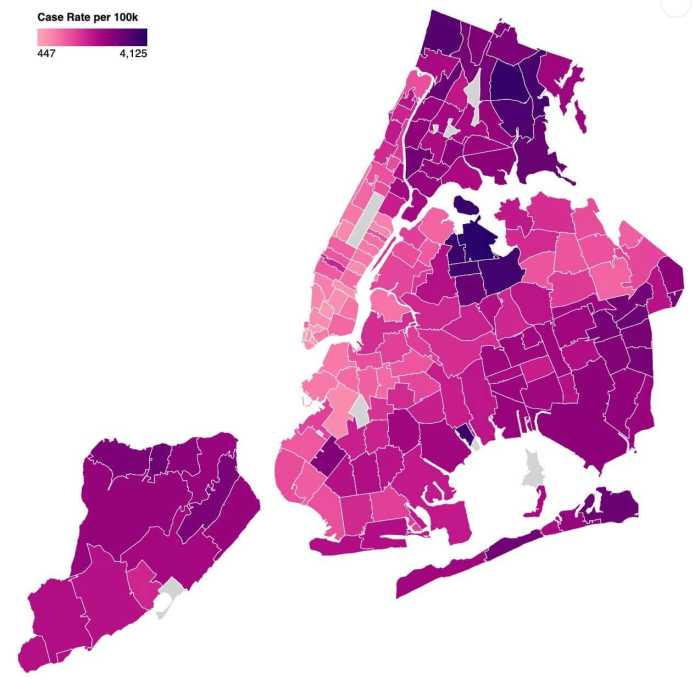Last month, the FDA authorized the use of a new COVID-19 booster dose that protects against the original strain of SARS-CoV-2 as well as the newer, more dominant BA.4 and BA.5 strains of the Omicron variant. This new dose, referred to as a bivalent formulation because of its dual protection between the original strain and Omicron, is offered by both Pfizer and Moderna, and is recommended for all New Yorkers ages 12 and up.
“As we continue to contend with the effects of this pandemic on all our lives, we need to ensure we’re using every tool available to us,” said Governor Kathy Hochul in a release last week as she announced the availability of the updated booster. “Throughout the pandemic, New Yorkers have been smart, looked out for one another, and taken steps to protect themselves and their neighbors. Getting vaccinated and boosted remains our best shot at protecting ourselves and fellow New Yorkers, and I encourage everyone eligible to sign up and get the updated bivalent COVID-19 booster.”
Hochul received her own bivalent booster in East Harlem on Sept. 7.

Anyone who has received at least the first two dozes of the Pfizer, Moderna vaccines or single dose of the Johnson & Johnson vaccine is encouraged to get the updated booster.
“The Pfizer as been approved for 12 and older and the Moderna is for 18 and older,” said Dr. Dana Mazo, infectious disease specialist at NYU Langone Hospital—Brooklyn. “It is approved and recommended for anyone who has already received the primary series. So, you need at least the first two shots of the primary series. If you’ve had one booster, two boosters, or no boosters, it is eligible for everyone, as long as your last COVID-19 vaccine shot was more than two months ago.”
The BA.4 and BA.5 strains of the Omicron variant are currently circulating the most out of all variants in the United States and are expected to spread more rapidly as the fall and winter approach, according to the FDA. The new bivalent boosters are formulated to protect against the BA.4 and BA.5 strains of Omicron.
The side effects of the bivalent booster are expected to be similar to all previous COVID-19 vaccine doses. Recipients of the dose can expect pain at the injection site, redness, swelling, as well as flu-like symptoms.
Much like a yearly flu shot, there have not been full human trials on this specific formulation of the dose. However, extensive human data from past doses, both standard and bivalent formulations, suggest that side effects will be more of the same.
“We don’t yet have the human data with this exact vaccine. But, we have tons of human data with the original vaccine and we have good human data with this concept of a bivalent,” Mazo said. “This is more similar to a flu shot. We do a new flu shot every year, but we don’t require full human testing on the flu shot every year, because that would take too long. And by the time we had the testing, it would be too late.”
To get the new booster, Brooklynites should reach out to their primary care physician or go to vaccines.gov, enter their ZIP code and search for the “Booster Newly Authorized Bivalent.” Dr. Mazo recommends people broaden their search to include both Pfizer and Moderna as the brand of previous doses no longer matters.
“The novel coronavirus has changed over time, with many new variants, including Omicron,” said Mary T. Bassett, commissioner of the state health department. “These bivalent boosters for the first time are tailored to a circulating variant. I encourage all eligible New Yorkers to take advantage of this advance and contact their health provider, visit the local pharmacy, or call their county health department to get this booster as soon as possible.”

The Centers for Disease Control and Prevention are expected to release updated guidance on boosters for children younger than age 12 in the coming weeks, according to the state health department.
The rate of new COVID cases, hospitalizations, and deaths citywide have been steadily decreasing since July, according to city data. In Brooklyn, there have been about 500 new cases per week for the last several weeks, but some Brooklyn nabes have some of the highest case rates in the city. Coney Island’s positive test rate was over 21% between Sept. 5 and 11, according to the most recently available data, with 94 people testing positive.
Citywide, unvaccinated people have had the highest rates of COVID cases, hospitalizations, and deaths. Since January 2021, when COVID vaccines first became available, more than 911,000 unvaccinated New Yorkers have tested positive for COVID, according to city data, and 8,749 have died. In that same time frame, just over 262,000 vaccinated and boosted people have tested positive for the virus, and 713 have died. Brooklyn has the lowest COVID vaccination rates of the five boroighs — just 73% of Brooklynites are fully vaccinated, according to city data, and only 36% have received a booster shot.
To find and schedule an appointment for a COVID-19 booster, visit vaccines.gov or the NYC Department of Health website, or call (877-829-4692).























